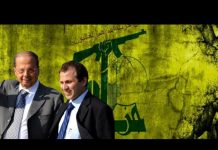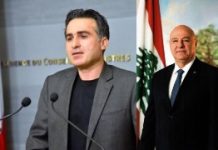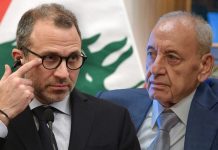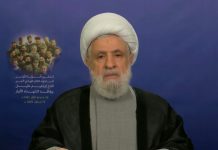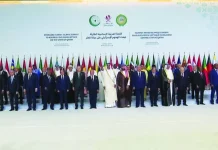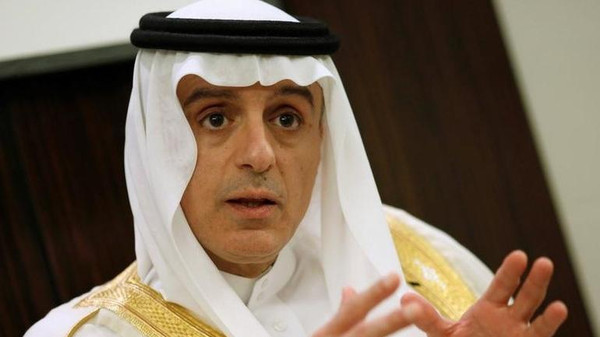Saudi-US Bridge
Ghassan Charbel/Asharq Al Awsat/May 20/17
Something else could have happened on Saturday and Sunday. US President Donald Trump could have followed the example of previous presidents through making his first foreign visit to a close country in the American continent or to an Atlantic country.
The impression left by the first days of Trump in the White House could have become a permanent misunderstanding with Arabs and Muslims.
If things went in this direction, we would have paid double the price of past years. The Middle East is sick with terrorism, extremism, shaking-stability policies, violation of international borders and dissolving armies for the interest of militias.
It is sick with fear, unemployment, poverty and narrow dimensions. We have seen its sons grab the boats of death to escape the hell of their countries.
Luckily, the chance was not missed. Saudi Arabia chose two years ago to abandon the wait-and-see policy. The current Saudi leadership apprehended that change is one of the conditions to protect stability and build prosperity.
The way of tackling topics discussed internally has changed – the Saudi diplomatic language abroad also changed.
Initiative has become the foundation, based on ambitious perceptions that stand on mutual interest, partnerships and division of responsibilities.
In March, Deputy Crown Prince Mohammed bin Salman, the Second Deputy Prime Minister and Minister of Defense, carried the Saudi perception to the White House – a perception that ensures a high possibility to build strategic partnerships that serve the interest of both countries in economy, politics and security and open the window of hope in the Middle East – that was about to be announced a devastated region.
Digits have a power that traditional slogans and general statements lack. In Saudi Vision 2030, there is a huge change in Saudi Arabia, mammoth investment opportunities and mutual interests that can build a bridge for future relations.
In parallel with digits, there was a Saudi decision to lead a comprehensive confrontation against terrorism and extremism as well as another decision to play a major role in restoring security and stability in the devastated region. Consequences of this role will be endured in partnership with allies.
Trump’s administration became aware of the importance of restoring good relations with Riyadh and the importance of Saudi portal in crossing to the Arab and Islamic worlds since Saudi Arabia has legality, ability, relations and the credit.
Crossing this portal grants the US an opportunity to restore the leading role in the region after years of hesitation and withdrawal policies – a crossing that provides the kingdom with a chance to grant Arabs again their role in protecting their stability and countries, years after the Arab world changing into a scene for other components’ greed in the region.
Saudi-US ties witnessed a series of summits throughout the seven decades and overcame several difficulties and tests. However, getting informed of Trump’s visit to the kingdom program makes us assume that we are before a first of its kind event in the history of both countries relations. This appears clearly from the preparations, agreements and messages.
What Riyadh will witness on Saturday and Sunday is a brave attempt to build a Saudi-US bridge from which relations between the two countries and nations would pass – ties that include fields of defense, politics, economy and benefiting from the US academic and technological progress.
Through this bridge, a partnership will pass to confront not only terrorism but also extremism that refuses to acknowledge the other, coexistence and cooperation. Saudi Arabia has transformed extremism confrontation into a program adopted by institutes aware of the danger of clashing with the world.
In Riyadh’s date there is an opportunity to correct two images. Saudi image infront of part of western and US public opinion and the US image infront of part of the Arab Islamic public opinion.
The Saudi youth nowadays aspires to live in a stable and prosperous country, to get a developed education, to enroll in a modern university and to acquire a job opportunity in a dynamic economy that copes with consecutive technology revolutions, and to have country that defends its interest and holds responsibility in peace and stability affairs.
The kingdom has succeeded in trimming ideas that call for facing the other because he is different. When the Saudi youth has these ambitions then he can easily meet on the bridge with the western and US youth. It is clear that the Saudi change in this field has left its impact on the Arab and Islamic worlds whose heads will meet Trump in Riyadh.
Saudi-US Summit represents a decisive and big response to the dangerous challenges in the region – it is a response to Sept. 11 attacks that targeted troubling US-Saudi relations and a response to the policy of exporting Iranian revolution, especially after what Iranian violations caused in pushing some Sunnites towards extremism.
The summit is also a response to the phase of US withdrawal from the region and the diminution of the Arab world role in it.
Riyadh dates are an opportunity for all parties – a US and Saudi opportunity that will transform on Sunday to an Arab and Islamic opportunity. If implementation was as serious in the coming period as the determining of dates, then the game rules will be changed in the region.
The Saudi-US bridge success paves the way to a fixed US bridge with the Arab and Islamic worlds and this would restructure the international scene.

